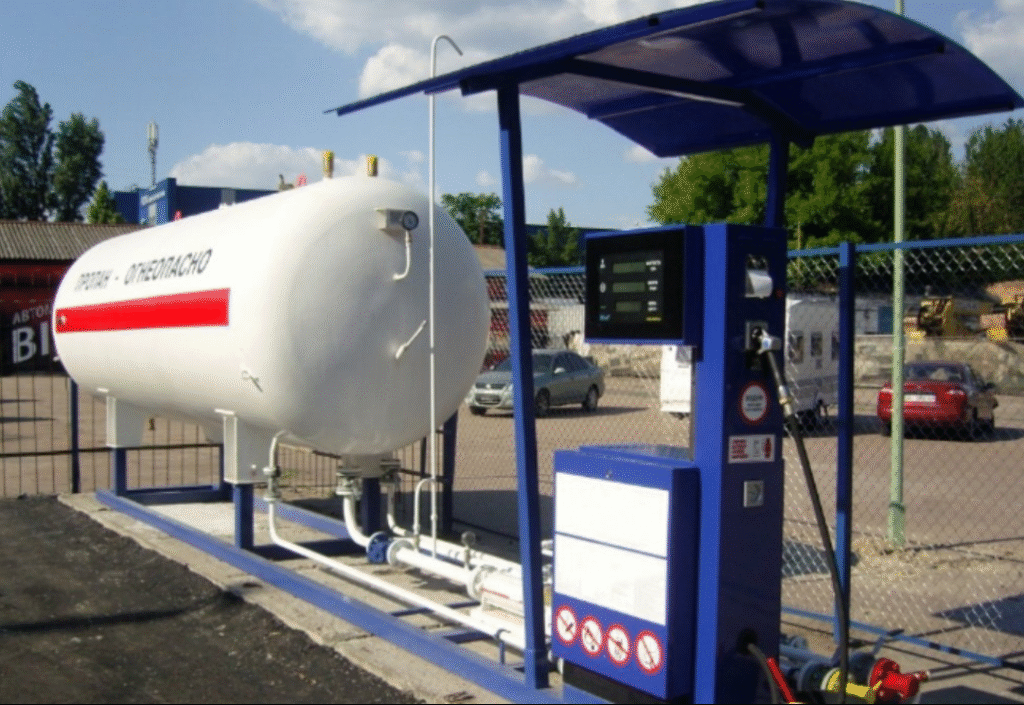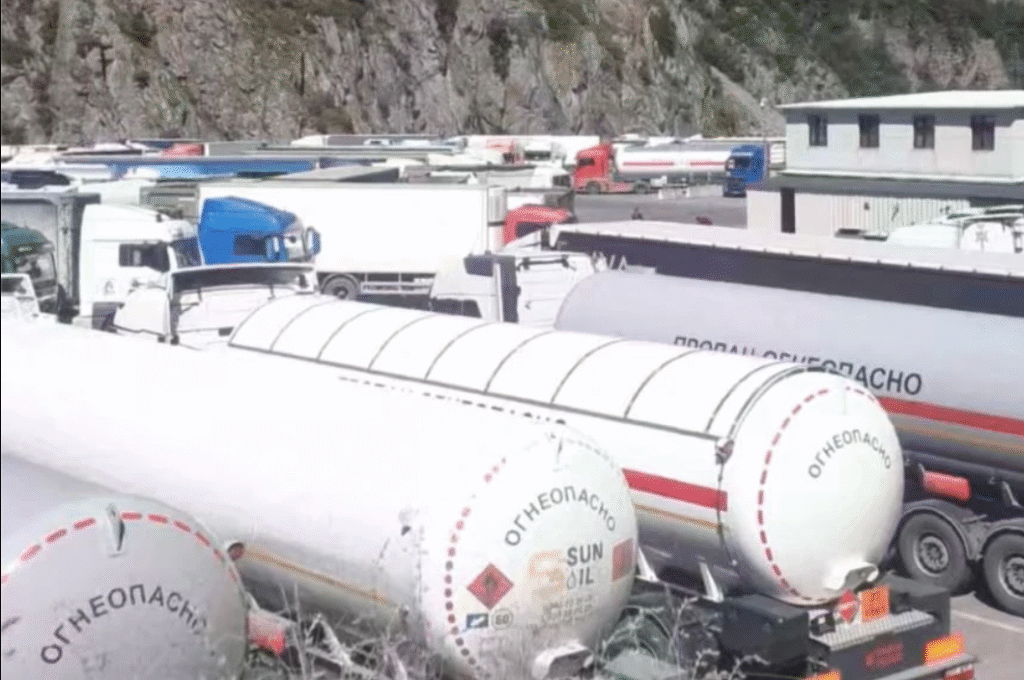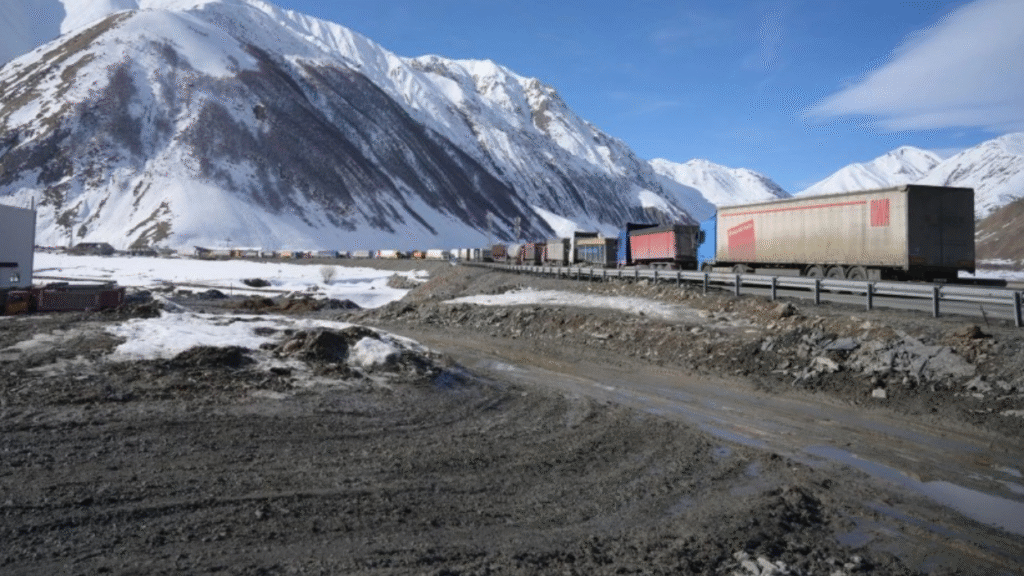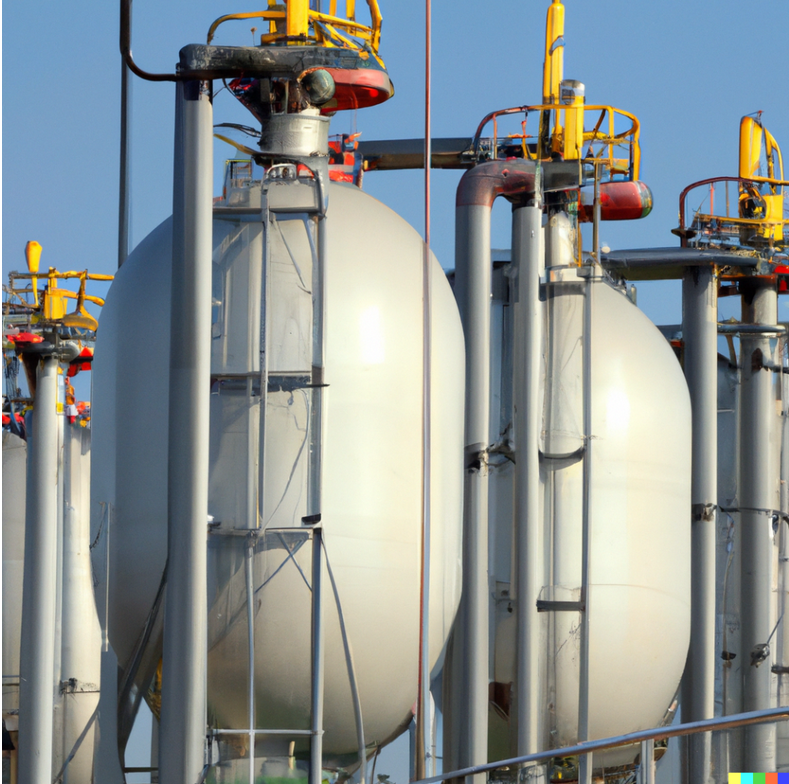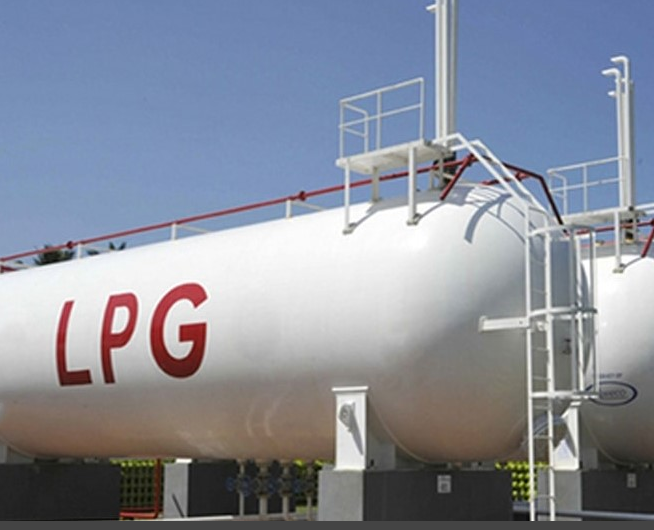LPG In Georgia Transit Disruption & Bribe Allegations
In July 2025, Armenian media and officials reported that drivers of LPG tankers exporting fuel to Armenia via Georgia were allegedly forced to pay up to $1,500 per truck in bribes to Georgian authorities or intermediaries to secure transit. These claims coincided with a steep rise in LPG prices in Armenian markets, sparking concern and prompting calls for investigations.
The Allegations: Details from Armenian Sources
Armenian Economy Minister Gevorg Papoyan highlighted trucker testimonies claiming the bribes were funneled through Armenian intermediaries to Georgian contacts to “permit entry.” The bribes reportedly averaged $1,200 to $1,500 per.
LPG retail prices in Armenia surged from ֏120 ($0.31) to ֏180 ($0.47) per liter—an increase of around 50%—which importers in Armenia linked to the transit delays and alleged fee extortion.
Official Reactions: Georgia’s Denial
Georgia’s Revenue Service responded swiftly, denying any deliberate obstruction or additional fees targeting Armenian LPG cargo, calling the reports “misinformative” and politically motivated. It emphasized standard customs procedures were in place without change.
Georgian media framed the allegations as part of broader political narratives rather than grounded in fact.
Transit Context & Trade Statistics
Official figures show 229,000 transit trailers passed through Georgia during H1 2025—down 4% from 2024. Among them, 57,500 were Armenian trailers, a slight 2% increase year-on-year.
Despite Armenian concerns, Georgia maintains all border inspections and fees are uniformly applied and no special restrictions exist for Armenian cargo.
Impact: Price Surge & Economic Disruption
A reported backlog of up to 500 LPG-laden trucks stranded at Georgian checkpoints led to shortages and a sharp cost increase in Armenia. LPG, being the primary vehicular fuel in Armenia, saw prices rise by over 40%.
Armenian importers referred these delays to intensified customs scrutiny and physical hold-ups, not changes in fuel purchase prices.
Broader Geopolitical Context
Analysts and Armenian exporters have speculated that Georgia might be indirectly enforcing Russian geopolitical interests—citing instances where Russian influence shaped Georgian customs behavior affecting Armenian exports.
Similar border friction arose earlier in 2025 with Armenian exports of brandy to Russia delayed in Georgia, prompting suspicions of coordinated pressure tactics.
Verification Gaps & Evidence Challenges
- No publicly confirmed prosecutions or investigations have verified the allegations of $1,500 bribes.
- Claims stem from anonymous sources and media reports; Georgian authorities assert no policy or exception targeting Armenian freight.
- Independent fact‑checking agencies in Georgia argue that the congestion at checkpoints is due to infrastructure strain or Russian-side pipeline and border conditions—not targeted obstruction.
Summary
| Issue | Armenian Claims | Georgian Position | Evidence Status |
|---|---|---|---|
| Bribes per LPG truck | $1,200–$1,500 demanded to allow transit | Denies any such fees; says no obstruction exists | Unverified, still under claims only |
| LPG price surge | ~40–50% fuel price increase due to delays | Attributed to general supply-demand imbalance | Supported by media price tracking |
| Transit delays | Trucks held in queues, slower border passage | Standard customs procedures; active mode processing | Official transit data shows minor decline |
| Political motives | Viewed as aligned with Russian pressure on Armenia | Flags narrative as politicized disinformation | No conclusive proof |
What Comes Next: Investigation & Outlook
Armenia’s Anti‑Corruption Committee is expected to review submitted claims from the Economy Minister if evidence is forthcoming.
Georgia’s Revenue Service may publish detailed logs or guidelines to reassure international transit stakeholders of transparent procedure.
Bilateral meetings and transit coordination efforts are likely to intensify to restore freight stability and allay market disruptions.
Continued volatility in Armenian LPG pricing could indicate unresolved supply chain or logistics issues.
Key Takeaways
Armenian sources allege $1,200–$1,500 bribes per truck for LPG transit through Georgia, triggering LPG price spikes in Armenia.
Georgia firmly denies these allegations and attributes delays to procedural factors, not targeted obstruction.
The claims currently lack verified evidence and rely on testimonies and media reports.
This case reflects broader regional trade tension dynamics, especially involving Armenia’s dependence on Georgian transit routes.
Ongoing scrutiny by Armenian officials and international observers may clarify whether systematic misconduct occurred.
In 2023, Georgia consumed 1.81 thousand barrels per day (kbpd) of LPG—up from 1.34 kbpd in 2022 and more than double its long‑term average of 0.94 kbpd since 1992.
Local LPG production is virtually nil—the last non‑zero values date to 2014. All domestic supply is met via imports.
LPG plays a modest but growing role in household cooking, commercial heat energy, industrial fuel, and increasingly automotive use in select segments.
Supply Chain: LPG Imports & Logistics:
Import Volumes & Origins
In Jan–Jun 2023, Georgia imported 25,240 tons of LPG—marking a 43% increase year‑on‑year from 17,600 t in the same period of 2022.
Almost all imports (99.6%) came from Russia, making it the overwhelming supplier during that period.
According to trade data platforms, Georgia receives LPG shipments from 157 countries overall. Leading exporters by volume are India (59%), China (7%), and Turkey (6%)
Storage, Distribution & Regulation
Georgia lacks LPG refining capacity; hence it relies entirely on import terminals and retail distribution networks.
Georgian Oil & Gas Corporation (GOGC) oversees high‑pressure gas pipelines and wholesale gas infrastructure but LPG logistics are largely privatized.
Multiple private companies import and distribute LPG through dedicated filling stations and dealer networks.
Demand Drivers & Use Cases:
Auto LPG Adoption
- Until 2016, LPG was virtually absent as a vehicle fuel; only used industrially.
- Autolpgas, founded in 2016, pioneered auto‑LPG stations: converting imported‐cars equipped with LPG systems, offering customers a cost‑effective fuel option.
- LPG costs ~50% less than gasoline, making it instantly attractive despite lack of eco‐awareness in Georgia.
- As of mid‑2023, Autolpgas operates ~20 stations nationwide. The company remains the market leader, though others have since expanded into the space.
- In Q4 2024, local forums indicate more drivers are seeking LPG conversions, highlighting growing consumer interest, though pricing and conversion logistics remain hurdles.
Residential, Commercial & Industrial Use
- LPG is a secondary fuel for households and commercial kitchens, peaking in winter due to rising heating demands.
- Industrial users—including small factories and transporters—also rely on LPG, where electricity or natural gas may be unavailable or cost‑lier.
Autolpgas: A Pioneer
Autolpgas is recognized as Georgia’s most dynamic company for introducing auto LPG market; it holds a substantial internal share and built the first nationwide station network since 2016.
The company imports LPG systems from Italy and gas supplies mainly from Russia. Their ecosystem includes conversion services, station operations, and fuel sourcing logistics.
Industry Fragmentation
While Russia provides nearly all supply (over 99% in early 2023), broader importer networks exist—some importing from India, China, Turkey, and beyond.
Market concentration remains high but expected to reduce as EU-style regulation and tax incentives evolve (e.g., lower excise rates for eco-friendly LPG).
Policy, Taxation & Regulation
LPG imports are subject to excise taxes, currently aligned closely with gasoline rates—unlike most countries where LPG is taxed lower as an eco-fuel. This has dampened consumer uptake .
Autolpgas and other stakeholders are advocating policy reforms under Georgia–EU Association Agreement to reduce LPG excise taxes.
Quality, safety & licensing regulations are overseen by relevant Georgian agencies, though enforcement remains inconsistent.
Trends & Growth Drivers
Rising Demand and Import Growth
- LPG imports rose ~43% YoY in H1 2023, implying accelerating consumption—and likely driven by auto conversions and industrial uptake .
Growth of Auto-LPG Segment
- Cost savings (~50% vs. gasoline), fuel efficiency, and a growing conversion market have made auto‑LPG increasingly attractive.
- Autolpgas’s success and expansion reflect steady consumer-driven demand and growing station infrastructure.
Regional Supply Shifts
- Import diversification is emerging: while Russia dominates, companies are exploring broader global sources like India, China, Turkey to ensure stability and competitive pricing.
Challenges & Market Constraints
Reliance on Single Supplier
- Overreliance on Russian LPG imports exposes Georgia to geopolitical risk, pricing volatility, and supply disruptions—especially relevant under current sanctions regimes.
High Taxes & Lower Affordability
- LPG excise rates remain high, limiting economic incentive for households to switch from natural gas or wood. Advocacy for tax reforms continues.
Infrastructure Limitations
- LPG filling station networks are limited (~20 stations for auto-LPG). Logistical challenges include temperature-sensitive storage, transportation losses, and investment in cylinder infrastructure.
Consumer Perceptions & Awareness
- Vehicle owners need assurances on safety, maintenance, and fuel availability—education is still lagging in several regions.
Future Outlook & Opportunities (2025–2030)
1. Market Forecasts
- While official forecast data for Georgia LPG through 2031 is available via paid reports, growth projections indicate continued demand increases in residential, commercial, and auto fuel segments.
2. Import Diversification & New Partnerships
- Opening sources beyond Russian LPG—e.g., India, Turkey, Azerbaijan—can reduce dependence and promote competitive pricing.
3. Station Network Expansion
- Market leaders like Autolpgas plan further station roll-outs, potentially increasing coverage from ~20 to broader regional reach.
4. Policy Reform: Incentives & Tax Cuts
- Reducing excise taxes in accordance with EU standards could drive consumer price-benefit, boosting adoption.
5. Infrastructure Investment
- Upgrading LPG terminal storage, cylinder networks, conversion centers, and import terminals—possibly linked to upcoming Kulevi Oil Refinery and port infrastructure at Black Sea coast—can facilitate growth.
6. Industrial & Commercial Fuel Demand
- As industrial expansion continues in transport/logistics, small manufacturing, and hospitality sectors, LPG demand is expected to rise steadily.
Strategic SWOT Summary
| Strengths | Weaknesses |
|---|---|
| Fast-growing auto-LPG segment | No local production, full import dependence |
| Established pioneer (Autolpgas network) | Limited station infrastructure |
| Cost‑effective vs gasoline | High excise taxes erode competitiveness |
FAQ Section
Q: How much LPG does Georgia import annually?
A: In H1 2023, Georgia imported ~25,240 tons of LPG—99.6% from Russia—with Y‑o‑Y growth of 43% compared to 2022 .
Q: Who supplies LPG in Georgia?
A: Russia dominates supply (~99.6% in early 2023), though newer import routes include India, China and Turkey .
Q: Why use LPG in vehicles in Georgia?
A: LPG in Georgia costs roughly 50% less than gasoline, and many imported used cars already have LPG systems—Autolpgas facilitated conversions and fill‑ups since 2016 .
Q: Is LPG taxed lower than gasoline?
A: No—Georgia currently taxes LPG at a similar rate as gasoline. Industry stakeholders advocate for alignment with EU policy to offer reduced excise burden for LPG.
Conclusion
Georgia’s LPG sector is nascent but growing, driven by rising imports, the emergence of auto‑LPG use, and increased consumer interest around cost savings. While domestic production is negligible, infrastructure and policy reforms—such as tax incentives and import diversification—present strong growth opportunities. Key players like Autolpgas are paving the way, but scaling distribution, enhancing awareness, and securing reliable global suppliers are the next critical steps for market maturity.
